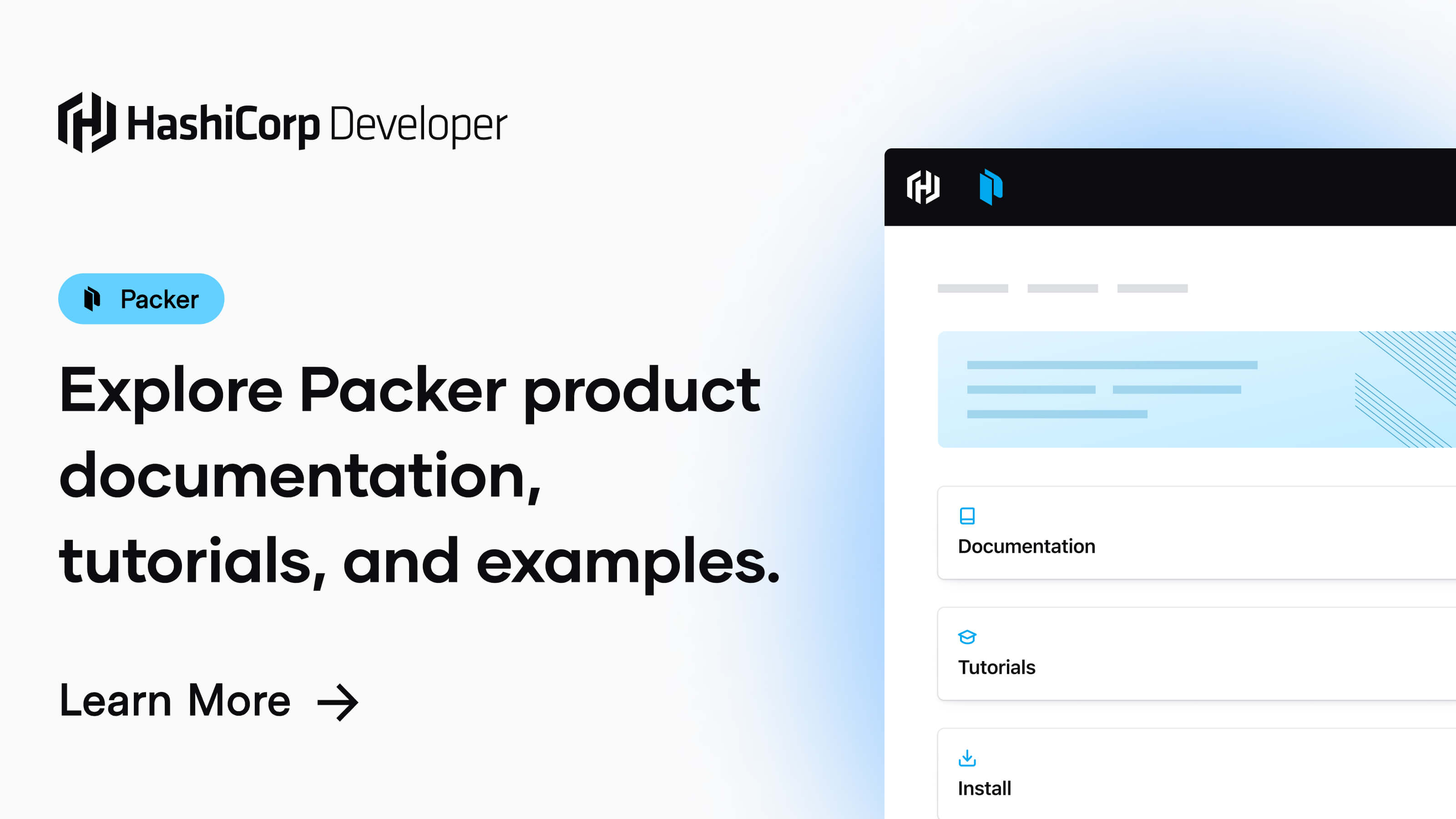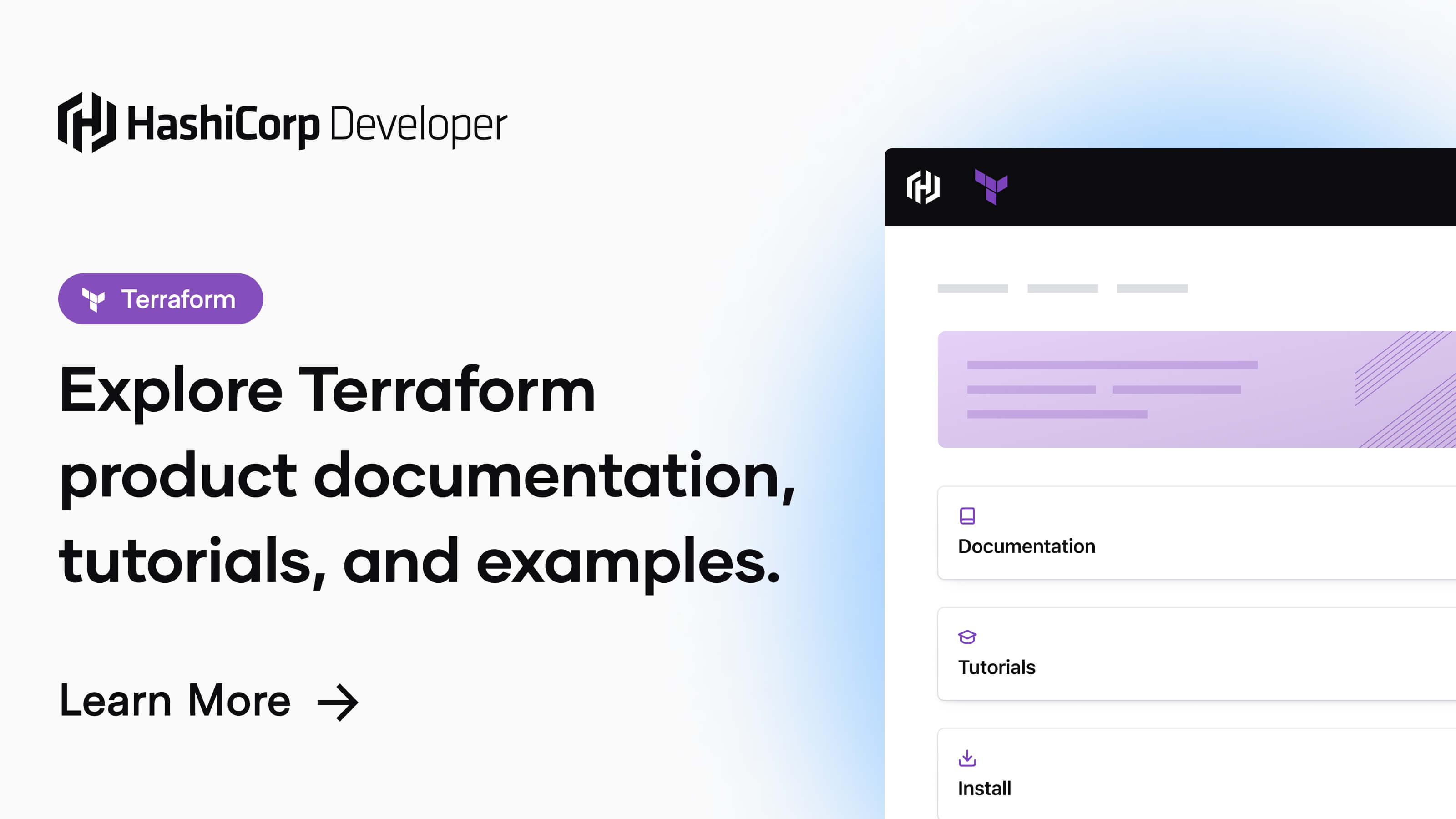Automate Packer AMI ID to Terraform Variables
Learn how to automatically pass your Packer-built AMI ID to Terraform variables for seamless infrastructure provisioning.
Learn how to automatically pass your Packer-built AMI ID to Terraform variables for seamless infrastructure provisioning.
This guide outlines how to seamlessly integrate Amazon Machine Images (AMIs) built with Packer into your Terraform infrastructure deployments. By following these steps, you can automate the process of using the most up-to-date AMI in your Terraform configurations, ensuring consistency and simplifying your workflow.
Use Packer's manifest post-processor:
post-processor block to your Packer template."type": "manifest"."output-file": "manifest.json".{
"builders": [...],
"provisioners": [...],
"post-processors": [
{
"type": "manifest",
"output-file": "manifest.json"
}
]
}Extract the AMI ID from the manifest file:
jq to parse the manifest.json.export AMI_ID=$(jq -r '.builds[].artifact_id' manifest.json)Pass the AMI ID to Terraform:
variables.tf).variable "ami_id" {}-var flag:terraform apply -var="ami_id=$AMI_ID"Use the AMI ID in your Terraform resources:
ami_id variable in your AWS instance or launch configuration:resource "aws_instance" "example" {
ami = var.ami_id
# ... other configurations
}Explanation:
manifest.json containing build details, including the AMI ID.terraform apply stage.This approach ensures that Terraform always uses the latest AMI built by Packer, promoting automation and consistency in your infrastructure deployments.
This code defines a workflow for building an Amazon Machine Image (AMI) using Packer and deploying it as an EC2 instance using Terraform. The Packer template builds an Ubuntu 20.04 AMI with Nginx installed. The Terraform configuration defines an EC2 instance that uses the AMI built by Packer. A shell script orchestrates the process: building the AMI, extracting the AMI ID, and deploying the infrastructure with Terraform. This setup ensures that the Terraform deployment always uses the latest AMI built by Packer.
{
"variables": {
"aws_region": "us-east-1"
},
"builders": [
{
"type": "amazon-ebs",
"region": "{{user `aws_region`}}",
"source_ami_filter": {
"filters": {
"name": "ubuntu/images/hvm-ssd/ubuntu-focal-20.04-amd64-server-*",
"virtualization-type": "hvm",
"root-device-type": "ebs"
},
"owners": ["099720109477"],
"most_recent": true
},
"instance_type": "t2.micro",
"ssh_username": "ubuntu",
"ami_name": "packer-example-{{timestamp}}"
}
],
"provisioners": [
{
"type": "shell",
"inline": [
"echo \"Hello from Packer!\"",
"sudo apt-get update",
"sudo apt-get install -y nginx"
]
}
],
"post-processors": [
{
"type": "manifest",
"output-file": "manifest.json"
}
]
}variable "ami_id" {}provider "aws" {
region = "us-east-1"
}
resource "aws_instance" "example" {
ami = var.ami_id
instance_type = "t2.micro"
tags = {
Name = "Packer-Built Instance"
}
}#!/bin/bash
# Build AMI with Packer
packer build packer.json
# Extract AMI ID from manifest file
export AMI_ID=$(jq -r '.builds[].artifact_id' manifest.json)
# Deploy infrastructure with Terraform
terraform init
terraform apply -var="ami_id=$AMI_ID"How to use:
packer.json, variables.tf, main.tf, and deploy.sh.deploy.sh executable: chmod +x deploy.sh../deploy.sh.This will build an AMI with Packer, extract the AMI ID from the generated manifest file, and then use that AMI ID to deploy an EC2 instance with Terraform. This approach ensures that your Terraform infrastructure always uses the latest AMI built by Packer.
Packer Manifest Post-processor:
manifest.json file is created in the same directory where you run the packer build command.Extracting AMI ID:
jq is a powerful tool, you can use other methods to extract the AMI ID from the JSON file depending on your preference and operating system. Examples include:
grep, awk, sed (with appropriate regular expressions).manifest.json file.Passing AMI ID to Terraform:
-var flag: You can define the ami_id variable directly within a terraform.tfvars file. This can be more manageable for multiple variables.Using AMI ID in Terraform:
General Best Practices:
| Step | Description | Code Snippet |
|---|---|---|
| 1. Generate Manifest with Packer | Add a manifest post-processor to your Packer template to output build details, including the AMI ID, to a JSON file. |
{"type": "manifest", "output-file": "manifest.json"} |
| 2. Extract AMI ID | Use a tool like jq to parse the generated manifest file and extract the AMI ID. |
export AMI_ID=$(jq -r '.builds[].artifact_id' manifest.json) |
| 3. Define Terraform Variable | Create a variable in your Terraform configuration to store the AMI ID. | variable "ami_id" {} |
| 4. Pass AMI ID to Terraform | When running terraform apply, pass the extracted AMI ID to the Terraform variable using the -var flag. |
terraform apply -var="ami_id=$AMI_ID" |
| 5. Use AMI ID in Resources | Reference the Terraform variable containing the AMI ID within your AWS resource definitions. | ami = var.ami_id |
Summary: This process outlines how to dynamically provision resources in Terraform using the latest AMI built by Packer. By extracting the AMI ID from Packer's output and passing it as a variable to Terraform, you ensure your infrastructure is always using the most up-to-date image.
By leveraging Packer's manifest post-processor, you can easily extract the AMI ID and feed it into your Terraform configurations. This dynamic approach ensures that your infrastructure deployments always utilize the most recently built AMI, promoting consistency and reducing manual errors. This integration between Packer and Terraform streamlines the process of creating and deploying infrastructure, contributing to a more efficient and robust workflow for managing your cloud resources.
 Manifest - Post-Processors | Packer | HashiCorp Developer | The manifest post-processor writes a JSON file with the build artifacts and IDs from a packer run.
Manifest - Post-Processors | Packer | HashiCorp Developer | The manifest post-processor writes a JSON file with the build artifacts and IDs from a packer run. Custom Conditions - Configuration Language | Terraform ... | Outputs. An output block can include a precondition block. Preconditions can serve a symmetrical purpose to input variable validation blocks.
Custom Conditions - Configuration Language | Terraform ... | Outputs. An output block can include a precondition block. Preconditions can serve a symmetrical purpose to input variable validation blocks. Deploying ACS 6.1 Enterprise on AWS with Packer and Terraform | Project Objective In this blog we cover the deployment of ACS (Alfresco Content Services) 6.1 Enterprise on AWS. The deployment consists of two mayor steps: Building AWS AMIs (Amazon Machine Images) containing a base installation of ACS 6.1 Enterprise. Building AWS infrastructure (VPC, ELB, RDS, et...
Deploying ACS 6.1 Enterprise on AWS with Packer and Terraform | Project Objective In this blog we cover the deployment of ACS (Alfresco Content Services) 6.1 Enterprise on AWS. The deployment consists of two mayor steps: Building AWS AMIs (Amazon Machine Images) containing a base installation of ACS 6.1 Enterprise. Building AWS infrastructure (VPC, ELB, RDS, et... Exploring Immutable Infrastructure with Vault - Lorenzo's Blog | During the last year, I have been curious about Immutable Infrastructure.
After researching, I noticed that I had been applying some of these concepts
already to stateless Docker containers, and I wanted to do a practical
project with it. So I thought about exploring Immutable Infrastructure and use
it to deploy Hashicorp Vault.
Exploring Immutable Infrastructure with Vault - Lorenzo's Blog | During the last year, I have been curious about Immutable Infrastructure.
After researching, I noticed that I had been applying some of these concepts
already to stateless Docker containers, and I wanted to do a practical
project with it. So I thought about exploring Immutable Infrastructure and use
it to deploy Hashicorp Vault.